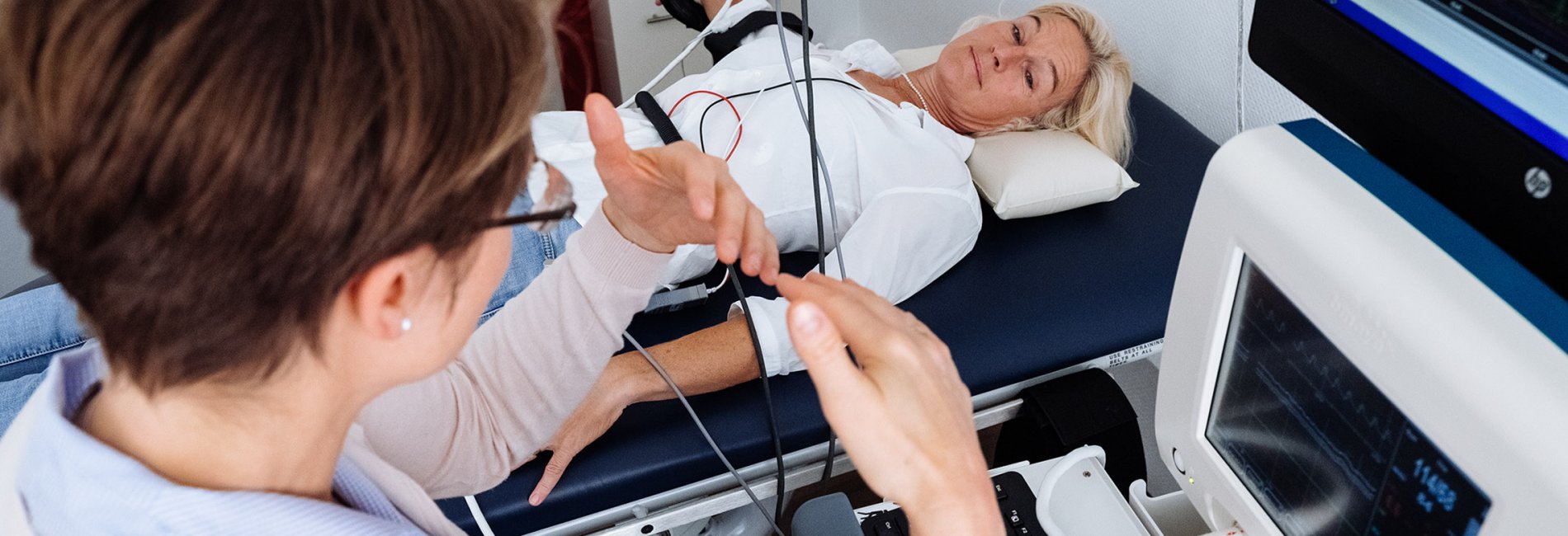Autonomous functional diagnostics in the Neuro Praxis Düsseldorf
What is autonomous functional diagnostics?
Autonomous functional diagnostics is a medical procedure to check the functionality of the autonomic nervous system (ANS).
It includes tests such as heart rate variability, blood pressure and respiratory rate, thermal stimulation, and upright posture.
These tests can reveal dysfunctions of the ANS and help identify health problems such as stress, high blood pressure or cardiovascular disease.
Neuro Praxis Düsseldorf carries out this examination at two state-of-the-art measuring stations - as one of only a handful of locations in North Rhine-Westphalia.
What should I consider before the examination?
Before the examination, you should not take any drugs that may affect the cardiovascular system. Please discuss with your doctor what medication these are. In addition, you should not eat anything for at least 6 hours before the examination. Please refrain from drinking caffeinated drinks such as tea, coffee and cola, as well as alcohol and smoking on the morning of the examination. Wear comfortable clothes and sturdy shoes for the examination. Please do not put on support stockings or corsages in the morning if you wear them on a daily basis. Cancel the examination if you have a severe infection, fever, or hypoglycemia during the day.
How is the examination procedure?
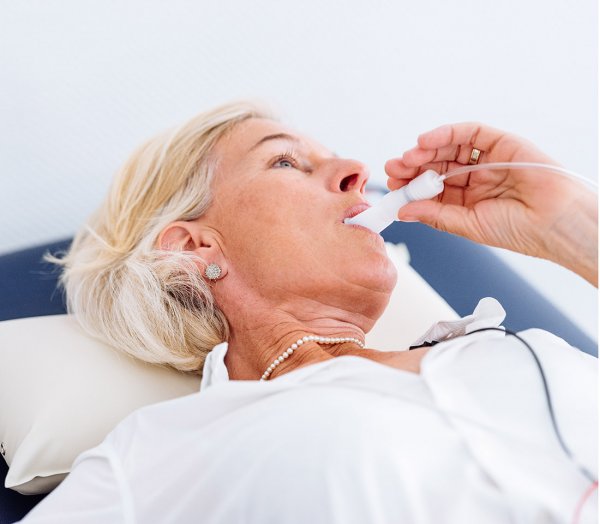
1. Heart rate variability
How is the examination performed?
First you lie on the tilting table in a relaxed atmosphere. We register the circulatory values using an automatic blood pressure monitor and an EKG. After the body has got used to the resting conditions, we will ask you to breathe in a given rhythm. You will be given precise instructions on how to do this. Afterwards it will be necessary to force as much air as possible out of the lungs through a mouthpiece.
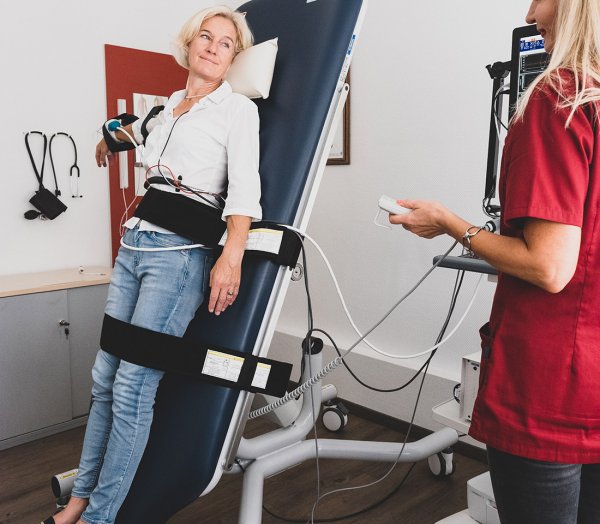
2. Tilt table examination
How is the examination performed?
In the last part of the examination, we will raise you up to the 70 ° position together with the tilting table. This happens very slowly. In the meantime you will be completely secured by straps. During the entire examination, you should relax and keep conversations to a minimum. Of course, we would like to ask you to inform us of any changes in your condition (e.g. dizziness, feeling hot). The duration of the examination depends on the one hand on your suspected circulatory disorder. On the other hand, the examination time depends on the complaints you have expressed or the changes in blood pressure and pulse. The examination usually takes about 45 minutes.
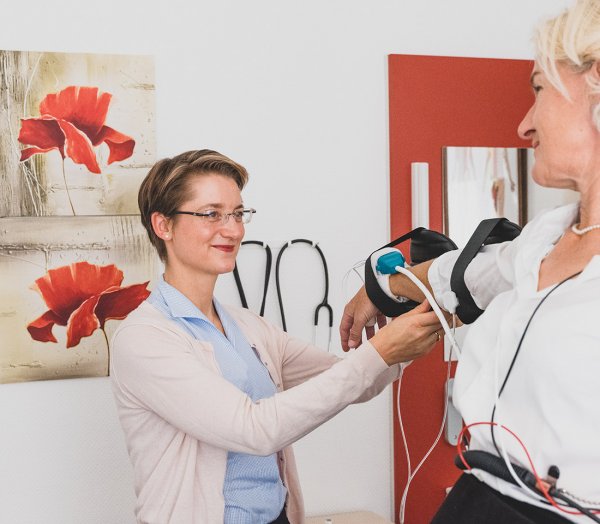
Determination of norepinephrine
Some circulatory disorders show changes in plasma noradrenaline between lying and standing. A slight increase in stress hormone levels while standing is normal. If there are special questions, the plasma norepinephrine level is examined while lying down and standing. This information helps, for example, in diagnosing the cause and treating the circulatory disorder. Occasionally, in the context of circulatory disorders, there is a very strong increase in heart rate and noradrenaline while standing. In contrast to this, however, certain forms of Parkinson's disease have a particularly low norepinephrine level. The blood sample is taken under standardized conditions (on an empty stomach without medication or previous alcohol / caffeine consumption). The examination takes about 15-30 minutes.
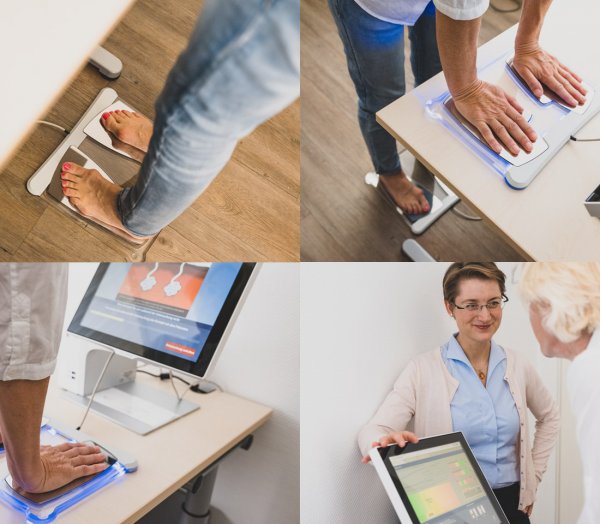
3. Sudoscan
The Sudoscan gives us important brief information about the sweat gland function (Sudomotor function). The test only takes about 5 minutes and enables the function of so-called small fibers in the skin to be screened. Small fibers is the name that summarizes all unmyelinated and myelin-poor nerve fibers. With the Sudoscan, the sudomotor nerve fibers are electrically stimulated, which transmit signals to the sweat glands. To do this, hands and feet are placed on the contact surfaces of the device. In response to a single, barely noticeable electrical stimulus on the surface of the skin, the sweat glands receive the signal to sweat. The resulting slight change in skin moisture is registered by the device as a change in skin resistance. The test gives an overview of whether the sudomotor nerve function deviates from the norm, how pronounced the deviation is and whether there are side differences in the function of these small fibers.
With a further development of the stimulation method, the EzScan, a prediction can be made of how high the risk is of suffering from metabolism-related, e.g. diabetic, polyneuropathy in the coming years.
Der Sudoscan in der Neuro Praxis Düsseldorf
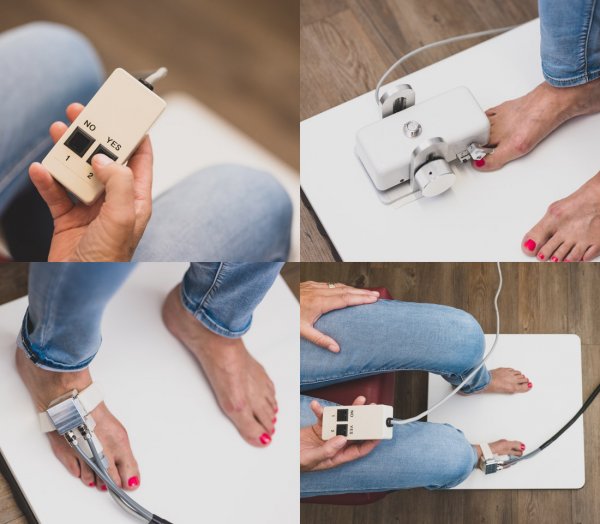
4. Quantitative Sensitivity Test (QST)
This test examines the function of the slowly conducting, non-myelinated nerve fibers (small fibers). These convey vibration, pain and temperature stimuli and control the functions of vegetative organs (e.g. circulation, bladder, gastrointestinal tract, sweat glands). By determining the lower threshold of sensation of different stimulus qualities, i.e. when a stimulus is still being perceived, it is possible to assess whether there is a functional disorder of the small fibers. Comparing the results for different stimuli helps localize the damage in the tissue, spinal cord or brain. The examination is standardized, takes about 45-60 minutes and is non-invasive.
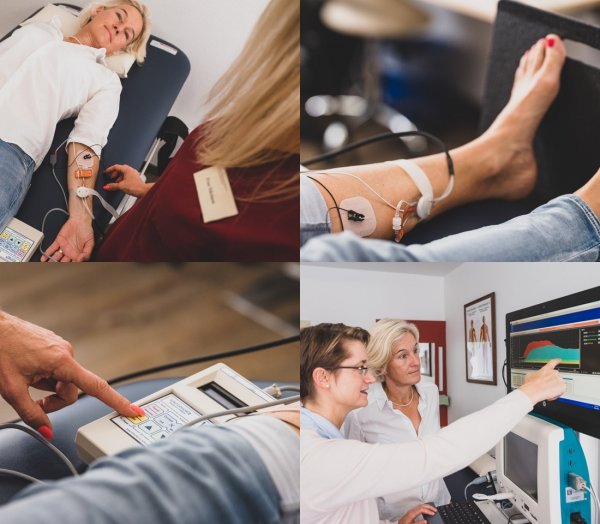
5. Quantitative Sudomotor Axon Reflex Test (QSART)
This test examines the function of the slowly conducting, non-myelinated nerve fibers (small fibers) that control the function of the sweat glands. Since the test measures the change in skin moisture, it also provides information about the performance of the sweat glands on the part of the body being examined. Under and over functions, i.e. hypohidrosis and hyperhidrosis (as in excessive sweating) can be recorded. Since the sweat gland function can be recorded on up to four body regions at the same time with the QSART, a comparison between arms and legs or a comparison between the right and left side of the body is easily possible. In contrast to the galvanic examination methods, the test response in the quantitative sudomotor axon reflex test is triggered by the natural messenger substance acetylcholine. This is applied to up to four skin areas. In order to be able to measure the resulting moisture on the corresponding parts of the body, small measuring chambers are positioned before the start of the test.
QSART in der Neuro Praxis Düsseldorf
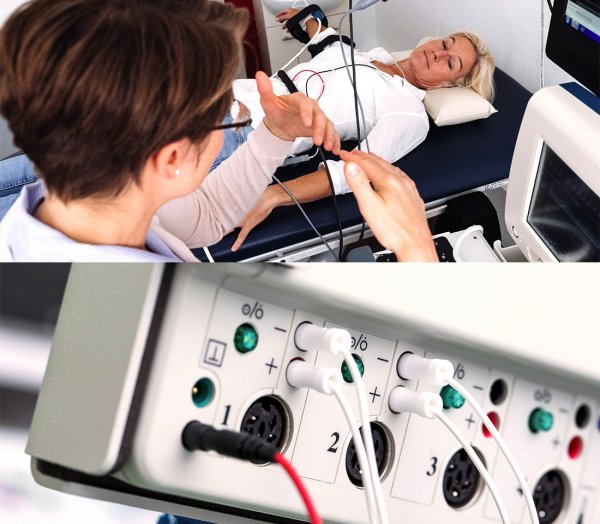
6. Sympathetic skin response
When examining sympathetic or galvanic skin responses, after application of an electrical skin stimulus, for example, there are no stimulus responses not only along the nerve tracts in the corresponding skin area but also electrical skin resistance changes in almost all other body regions. These changes in electrical voltage can be measured particularly well in regions with a high density of sweat glands, such as on the palms of the hands and the soles of the feet. Test duration about 15 to 30 minutes.

"Do you have any questions about our services or would you like to make an appointment? We would also be happy to advise you in our private medical video consultation"
